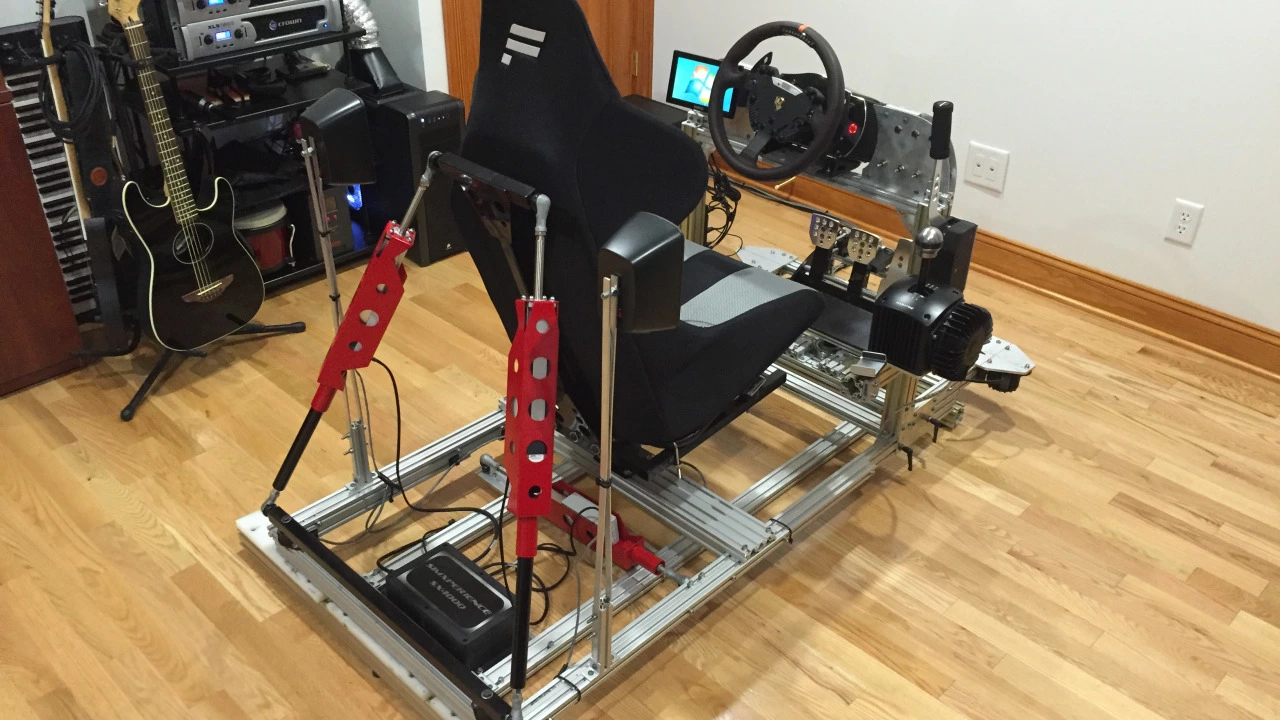Identifying Your Space and Budget
Starting off your venture to build a racing simulator begins with two fundamental questions - 'how much space do I have?' and 'how deep are my pockets?' Budding sim racers may be quick to think they can stuff a full cockpit in their cramped studio apartment or build a triple monitor setup on a shoestring budget, but me, Griffin, I'm here to gently intone that might not be the right approach.
Seems pretty obvious, right? And yet, there were countless times I myself tripped over my racing seat in my previously cluttered living room, forever cementing the importance of a logical spatial arrangement. No matter the size of your space, there's a racing simulator build that will fit; it just requires realistic expectations and a touch of creativity.
Now, I won't tease you with high-end simulators that are only affordable for professional race car drivers or Hollywood actors. When considering your budget, keep in mind it’s not just about the initial purchase. Things can and will need replacing, so be prepared to incur some maintenance costs down the road.
Choosing Your Racing Seat
Your racing seat is your cockpit, your captain's chair, your throne. You'll want something that can withstand long periods of use without discomfort. I've spent countless hours flying down a virtual Fuji Speedway or mastering the apexes at Laguna Seca. Want to know what can really take you out of these heart-pounding moments? A sore backside from a poorly chosen seat.
Be it a racing chair, an office chair or even a modified car seat, comfort and ergonomics should be your prime considerations. Keep an eye out for seats that offer good lower back and shoulder support. As someone who managed to turn a salvaged car seat into a throne fit for a Sim Racing King, trust me, it's worth devoting time and effort into this part of the setup.
The Impeccable Importance of Pedals and Steering Wheel
Loading up a simulation race without a decent steering wheel and pedal set is akin to entering a sword fight armed with a toothpick. They are key to a truly immersive experience. And believe me, quality matters. I’d be laughing my socks off if I hadn’t once tried a 24-hour Le Mans race with cheap, mushy pedals. Needless to say, it was less racing, more foot cramp management.
An ideal steering wheel should deliver excellent tactile feedback, and load cell pedals offer a realism that is unmatched by the standard potentiometer pedals. You might see a wild variety of fancy product names and brands, but I'd advise studying individual product reviews rather than getting lured by high-profile branding.
Construct Your Cockpit
The cockpit or the racing rig, is essentially the skeletal structure that holds all your equipment together. Designing it depends heavily on your space, budget, and ambition. Although many fantastic pre-made options are available, building your own provides an unmatched sense of satisfaction.
You could utilize PVC pipes, wood, or even metal for construction. I’ve seen some pretty nifty sim rig builds utilizing salvaged parts too. This is an area where your creativity and handiness can shine. Remember, your rig needs to be sturdy. Nobody wants a wobbly experience, especially when you're going knee deep into the final lap!
Monitors vs VR: The Eternal Debate
Ah, the age-old question – to monitor or VR, that is the question! While the panoramic view offered by a multi-monitor setup is visually appealing, a VR headset provides an immersive 360-degree experience that no amount of monitors can match.
It was a predicament that kept me awake many nights (slight exaggeration there, but you get my point). After many debates and comparisons, I personally gravitated towards VR due to the increased immersion. But, do your own research, try things out if you can, and find what suits your style and comfort the best.
Cable Management and Power Issues
Wiring up all of your fancy new equipment can easily turn into a nightmare if not thought through. With steering wheel, pedals, monitor/VR set, and perhaps even a sound system all requiring power and connection to your race simulator PC, things can get tangled pretty fast (yes, speaking from experience).
Spend some time planning out your cable routes and use appropriate cable management tools such as cable ties, adhesive hooks, or cable channels. It’s not the most exciting part of your build, but ignoring this can lead to frustration or even hardware failure if cables get tangled and yanked out unintentionally.
Choose Your Weapon – The Racing Simulator Software
The final and equally significant piece of the puzzle is the racing simulator software. There are several contenders that dominate the market. Each has its unique appeal whether it be the ultra-realist physics of iRacing or the intoxicating diversity of car and track selection in Assetto Corsa.
Do your research and pick based on your preferred style. Trial versions are a great way to get a feel for the software before making a purchase. I personally got a kick out of Project CARS due to its thrilling weather conditions system. It's not just about speed and skill, but how well can you navigate a track when the heavens open and the downpour begins!
Maintenance and Upgrading Your Setup
The build of your racing simulator may end, but evolution of your rig will always be ongoing. Take care of your equipment as the costs mount up if you have to keep replacing parts. Regular cleaning, securing loose parts, and ensuring your cables remain well managed will keep your rig running smoothly.
Keep an eye out for potential upgrades – better monitors, improved pedal sets, seats with motorized force feedback, etc. Remember, Rome wasn’t built in a day - and nor will your ultimate racing simulator. Take it from me, a one-time eager beaver turned devoted sim racer, the journey towards building and fine-tuning your simulator is often as enjoyable and rewarding as the racing itself.
